Like Word, Excel, and any other Office files, PowerPoint files are prone to corruption. It is possible if you open a file that is damaged or doesn’t open, and you get an error such that you cannot see what is inside it. This post will guide you in troubleshooting a damaged PowerPoint presentation.
How to repair a corrupt PowerPoint file
Before we start, here are some scenarios in which you can use these tips to extract data from the PowerPoint file or fix it and make it work as expected.
- This is not a PowerPoint Presentation.
- PowerPoint cannot open the type of file represented by <file_name>.ppt
- Part of the file is missing.
If you encounter an issue with memory or system resources or an an invalid page fault when opening the file, you need to troubleshoot Windows.
Here is the list of methods to follow in case of a corrupt PPT presentation:
- Open and Repair
- Insert slides into a blank presentation
- Apply the damaged presentation as a template
- Make a copy of the damaged presentation.
- Save the presentation as a Rich Text Format (RTF) file.
1] Open and Repair PPT Files
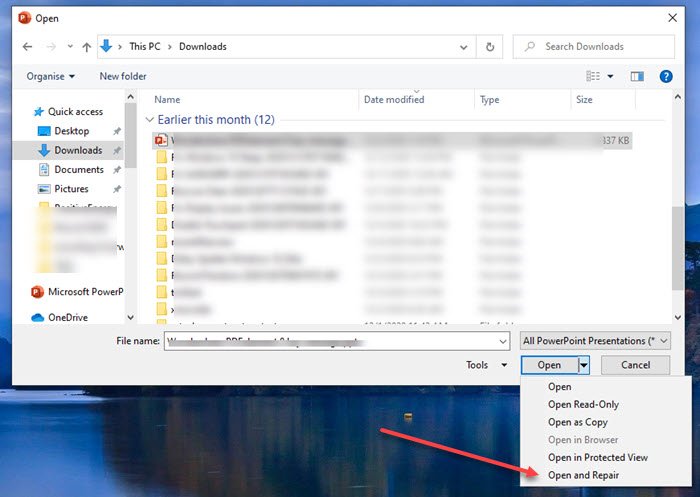
- Open PowerPoint application, and then click on File > Open
- Select the corrupt file, and then click on the down arrow on the open button
- Select Open and Repair, and then click on the Open button again.
2] Apply the damaged presentation as a template
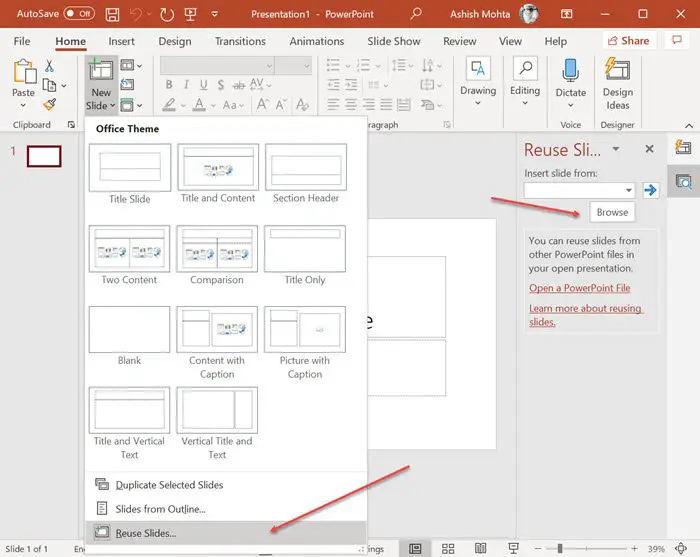
Did you know you can open one PowerPoint into another, and they are added as slides? You can use this trick to open the damaged presentation, but it involves a few more steps.
- Create a New PowerPoint file, and then click on the arrow under the New Slide menu.
- It will open the Reuse Slide menu on the right and allows you to select a file.
- Once the file is imported, it will reveal the slides, with a preview with all the details.
- You can then right-click and choose to insert a slide with our without formatting.
If the presentation doesn’t look as expected, you need to apply the damaged presentation as a template.
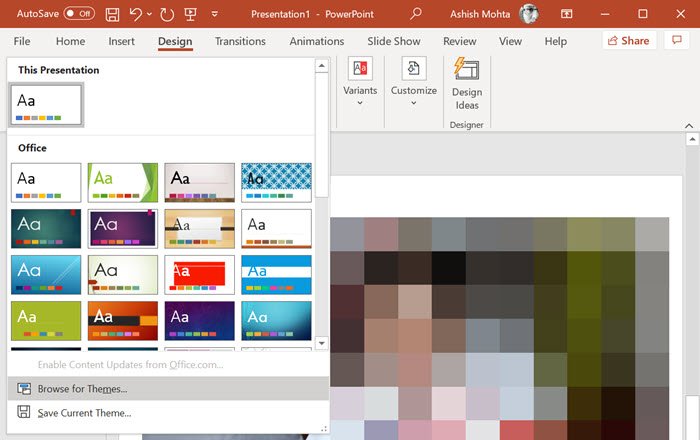
- Click on the File menu, select save as, and save it with a new name.
- Switch to the Design tab, and click on the down arrow of Themes section > Browse for Themes.
- Select the damaged presentation, and apply it.
That should fix any issues with look and feel.
3] Open the temporary file version of the presentation.
When you open a PowerPoint file, a temporary version of the same file is also created. This acts as a buffer where the original data is available until the final save is made. If corruption occurs after you open the file, you can use that file.
The file is usually saved in the same folder or temporary folder with the same file name and ending with “TMP.” Locate the file and rename the extension from TMP to PPTX. Next, please double-click on it to open it with PowerPoint or a browser from the PowerPoint app.
4] Auto Recover File Location
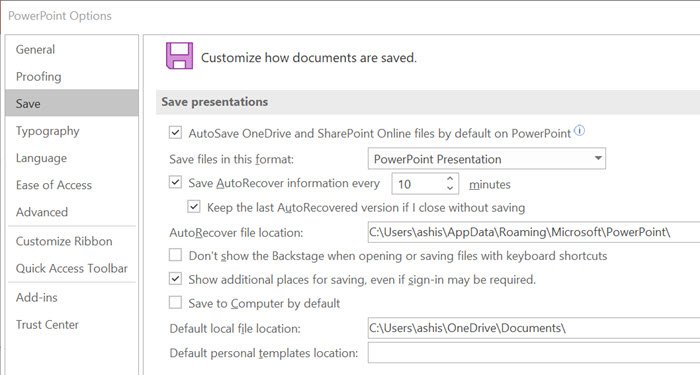
All office applications have auto-recovery built into them.
- To find the backup file location, go to File > Options > Save > Save Presentations.
- Look for Auto Recover file location information.
- Open the path in File Explorer, and locate the file.
- Copy it to a new location, and then open it.
5] Save the presentation as a Rich Text Format (RTF) file.
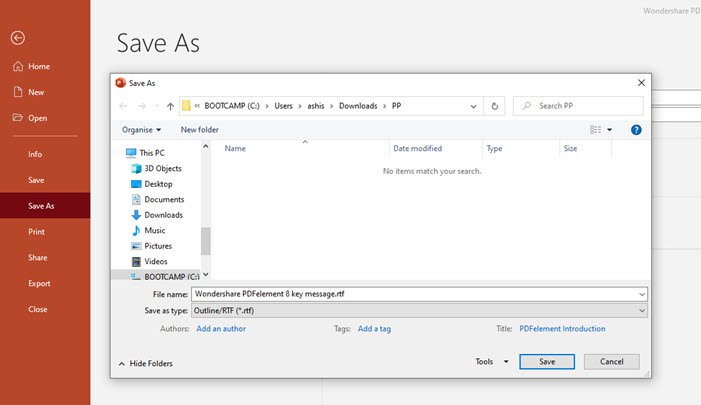
If you can, open the file and choose to save it in RTF format. This method will allow you to extract the data from the PowerPoint file to some extent, if not everything.
Click on the File menu, save as, and then choose RTF from the file format dropdown. Save it in a location different from the original file. Once done, instead of directly opening it, open it with the PowerPoint application using the File > Browse method.
I hope these suggested solutions are helpful when you face a corrupt or damaged PowerPoint file.
Related reads:
Leave a Reply